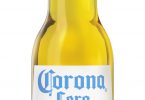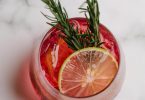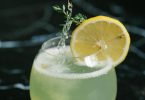Volatility creates opportunity
This emerges in a new report from IWSR which points out that this is simply a continuation of a trend already seen in recent years. As a result, alcoholic drinks companies are increasingly finding themselves competing for share of stomach across the entire beverage space.
The recently-released IWSR Global Trends Report 2017 points out that “the global drinks market is changing at an unprecedented rate with consumption swings and market preferences both unpredictable and surprising”.
IWSR highlights some of the key trends that are creating both opportunities and challenges for industry executives.
These include ever-changing consumer tastes, the role of digitization in driving both preference and purchase, up- and down-trading in key markets, an increase in healthy lifestyles and a rise in at-home consumption affecting the on-trade. These underlying consumption drivers are affecting the overall global drinks landscape. A few key insights in the new report include:
Trading Up and Down: The premium-and-above segment generally continues to grow well. While in some cases this is simply due to consumers having more money and therefore the means to trade up, it’s also related to increasing knowledge. The rise of professional bartenders and popularity of drinks apps, among other factors, is helping to educate people about alcohol and leading them to make more discerning drinks choices.
Simultaneously however the mainstream segment is growing in many parts of the world. In major developing regions such as Asia and Africa this is due to the ongoing growth of the middle classes which is encouraging consumers to trade up from lower-priced traditional and local products.
Digitalisation: Technology is becoming increasingly involved in the sales cycle from building awareness to Point-Of-Sale. Increased access to the internet, social media and digital technology have exposed consumers to more brands and categories, adding pressure on marketers to get their brand to stand out. Websites and apps are becoming increasingly influential in consumer choice by providing drinkers with information, recommendations and even price comparisons. Perhaps even more significant is the rise of the e-commerce channel, growing fast and quickly spreading to new markets. Online giants like Amazon are competing with more established grocery retailers, changing not only the way in which consumers purchase alcohol but also which products and brands they buy.
Authenticity: Consumers are using price less as a definer of quality, instead focusing on the quality of the liquid itself as well as brands’ back stories and values. They’re also increasingly seeking out unique and interesting products that reflect their values, focusing on attributes such as quality, authenticity and provenance. As a result, the craft trend continues to grow and spread geographically, making its influence felt across most alcoholic drinks categories although volumes remain small, with the exception of beer in the US.
Health and Wellness: With growing awareness of the health implications of excessive drinking, many people are opting to reduce their alcohol intake. For some this involves choosing products lower in alcohol. Consequently, low-ABV and non-alcoholic drinks are growing rapidly and producers are introducing ever-more varieties in order to tap into the trend. For others it means drinking less but of better quality, helping to fuel the premiumisation trends seen across a growing number of categories in regions such as North America, Key Europe (Belgium, Czech Republic, Denmark, France, Germany, Ireland, Italy, Netherlands, Poland, Portugal, Spain, Sweden, Switzerland, Turkey & UK) and Australia. Other health trends filtering down from the food industry, including an increased demand for gluten-free, dairy-free, organic or vegan products, are leading to innovation and new launches.
While some are continuations or evolutions of previous trends, others are still developing and their full impact has yet to be seen according to the IWSR report. The IWSR Global Trends Report 2017 pulls together both long-term and emerging trends from the global alcoholic drinks industry which have been collated from in-depth insight gained from local operators.








